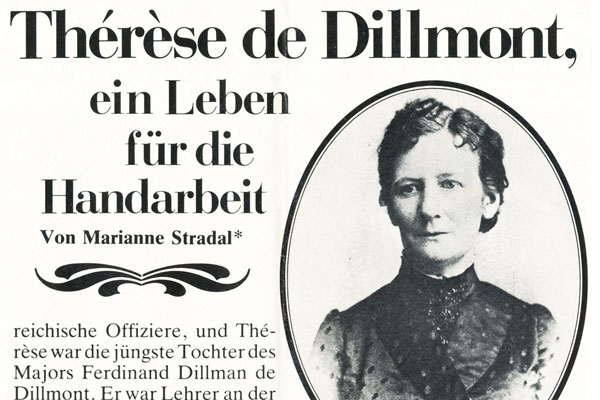

Where better to start than with plain sewing. Therese begins with a kind of apologia for hand sewing, acknowledging that the machine so often takes the place of the hand in sewing, but "in whatever circumstances of fortune one may be placed, the ability to sew well will always be useful."
You just know there is more to plain sewing than meets the eye. Right at the top of this chapter is a picture of a strip worked in running, herringbone and buttonhole stitches. This would hardly be called utilitarian, despite the simplicity of the stitches.
Therese has some useful tips in the first chapter, and some not so useful tips. Perhaps the least useful is the advice to those with damp sweaty hands. She advises those unfortunates to keep a small box of asbestos powder handy, and occasionally dip their fingers into it.
The more useful tips involve posture while sewing. "No kind of plain sewing or embroidery compels one to adopt an awkward attitude." One must avoid ungraceful and unhealthy positions. One must keep one's work at a height that will render it unnecessary to lower the head, which should be held as straight as possible and at most only slightly bent forward. Perhaps I should modify my twisted posture, curling up on the sofa with legs tucked under, watching TV and sewing at the same time.
Who would think that there are so many different kinds of stitches and seams? She covers them all: flat seams, seam stitch, dressmaking seam, antique, openwork, double or french seam, open hemmed double seam, herringboning, whipping, scalloped gathers. She moves through gathering and smocking (remember we are still under plain sewing), how to sew on tape loops, rounded cords, piping, binding with braid or galoon, and ornamental stitches for underlinens.
As a child I dreamed of coloured underlinens decorated with ribbons inserted using the openwork seam, ornamented with coral stitch, single or double feather stitch, or Russian stitch with interlaced stitches. I wondered what galoon was, and where I could get it. I dreamed of little frocks with smocking, even though I was never the little frock kinda girl. The possibilities seemed endless as I browsed the pictures of delicate disembodied hands with needle and thread, working the stitches.
Coming back from dreamland, the section on how to sew on buttons and how to sew buttonholes is really useful. I refer to this often, as I mostly still work buttonholes by hand even though I know how to do it with my sewing machine. It gives me inordinate pleasure to do them by hand. Buttonhole stitch makes a little knot of each stitch around the edge of the buttonhole.
Plain sewing is so much more than a simple running stitch. This chapter alone earns the Encyclopedia its place on my bookshelf.
Assignment from Chapter 1:
Find out what galoon is, and make something with it.

ooh, I'm looking forward to your project! From some very brief Googling, galoon seems to be some form of lace trimming, but I could find no pictures and Wikipedia is sadly lacking in this area....
ReplyDeleteI do buttonholes on the machine (the new machine makes them quite magically). One thing I still do by hand is make little reinforced loops out of thread for buttonholes on an edge-to-edge opening. My mother taught me how to do these and I've never forgotten. It's a kind of crochet technique, with sewing thread and a needle. I wonder if Therese covers those?
ReplyDelete